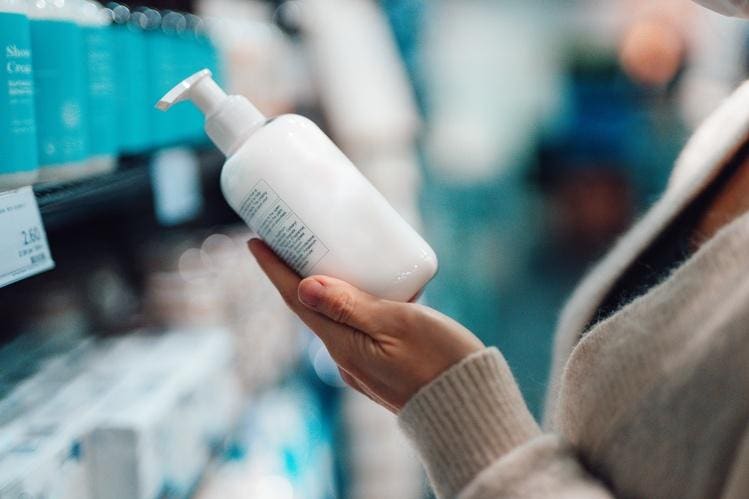Wayne Liu is the Chief Growth Officer and President of Perfect Corp America.
For beauty brands, 2025 represents a defining year that calls for bold investments in transformative technologies and scientific advancements to secure the next decade of success. Having partnered with over 700 beauty brands and retailers globally, I’ve witnessed firsthand how technology and innovation are reshaping the industry. Let’s explore five cutting-edge trends poised to shape beauty in the new year with some actionable insights for brands eager to lead the transformation.
1. AI-Driven Personalization And Efficiency
Artificial intelligence (AI) has evolved from an exciting frontier to a critical tool for beauty brands. In 2025, companies can adopt AI across operations to unlock efficiencies, drive innovation and enhance consumer engagement. AI currently offers tailored skincare recommendations, virtual try-ons and real-time product suggestions while transforming workflows, optimizing supply chains and streamlining product formulation.
AI also plays a pivotal role in training and education. AI-powered platforms can deliver personalized learning experiences and real-time guidance, helping professionals adapt quickly and effectively. In my experience, for GenAlpha, the digital-first generation, AI-powered tools resonate deeply, offering seamless in-store experiences like skin analysis kiosks that provide instant, tailored recommendations. By integrating AI into every facet of their operations, brands can position themselves as industry leaders in a rapidly transforming market.
2. Immersive Tech
Augmented reality (AR) is also emerging as a powerful tool to enhance the consumer experience. The growing popularity and technological maturity of AR glasses are redefining how beauty is accessed and personalized because they allow consumers to try on makeup, hair color or skincare techniques virtually, breaking down barriers to experimentation. The hands-free, real-time tutorials projected directly into the user’s field of vision enable precise application of products, such as contouring or eyeliner, with virtual overlays guiding each step.
By integrating AR into the consumer journey, brands enhance convenience, build trust and deliver personalized guidance that aligns with minimalist principles. As AR glasses gain traction, I believe they will shape the future of consumer interactions in beauty.
3. Neuroscience Meets Beauty And Wellness
Neurocosmetics, an emerging field at the intersection of science and self-care, focuses on how skincare products can influence the nervous system. Neurocosmetic products are designed to reduce stress, enhance mood and create a sensory experience that transcends traditional beauty routines by interacting with the skin’s nerve endings.
Consumers increasingly seek products that contribute to emotional well-being alongside physical benefits. For example, mood-enhancing fragrances have the potential to elevate the sensory experience. As the lines between beauty and wellness continue to blur, neurocosmetics offer brands an opportunity to explore beauty’s emotional and sensory dimensions while aligning with holistic self-care trends.
4. The Rise Of Regenerative Beauty
Regenerative beauty is transforming the industry, driven by advances in biotechnology and a heightened focus on sustainability. While stem cell research has long been established, I’ve seen how recent breakthroughs in lab-grown ingredients like collagen and peptides are bringing regenerative technologies into the mainstream. These innovations aim to mimic natural compounds to repair and rejuvenate skin at a cellular level to help address the root causes of concerns like aging and damage.
Regenerative beauty also appeals to environmentally conscious consumers. Lab-grown ingredients have the potential to reduce the ecological impact of harvesting natural resources while eliminating the need for animal testing. This convergence of science and sustainability is reshaping expectations, offering solutions to align with ethical values. As we look to the future, brands may want to consider investing in regenerative technologies to create products that meet the growing demands for sustainability.
5. Climate-Responsive And Localized Beauty
To double down on sustainability, it has become a non-negotiable priority for the beauty industry, especially as Gen Z drives demand for eco-conscious and transparent practices. Known for their environmental values, Gen Z expects brands to deliver products that reflect their commitment to sustainability while catering to personalized needs.
Climate-responsive beauty focuses on formulations designed to adapt to specific environmental conditions, such as dryness in cold climates or humidity in tropical regions. Localized beauty emphasizes regionally sourced ingredients, reducing carbon footprints and supporting local economies. For example, a moisturizer designed for humid climates might incorporate native botanicals, ensuring both efficacy and environmental responsibility.
By addressing environmental concerns and leveraging local resources, brands can resonate with Gen Z’s values and position themselves as leaders in a greener, more inclusive future.
Final Thoughts
The beauty industry in 2025 will be shaped by its ability to innovate across multiple dimensions. AI’s transformative potential, immersive tools, neuroscience, sustainability—these trends offer unparalleled growth opportunities. By investing in these areas, I believe beauty brands can meet today’s consumer demands and secure their place in a future defined by science, technology and conscious consumerism.
Forbes Business Council is the foremost growth and networking organization for business owners and leaders. Do I qualify?
Read the full article here

